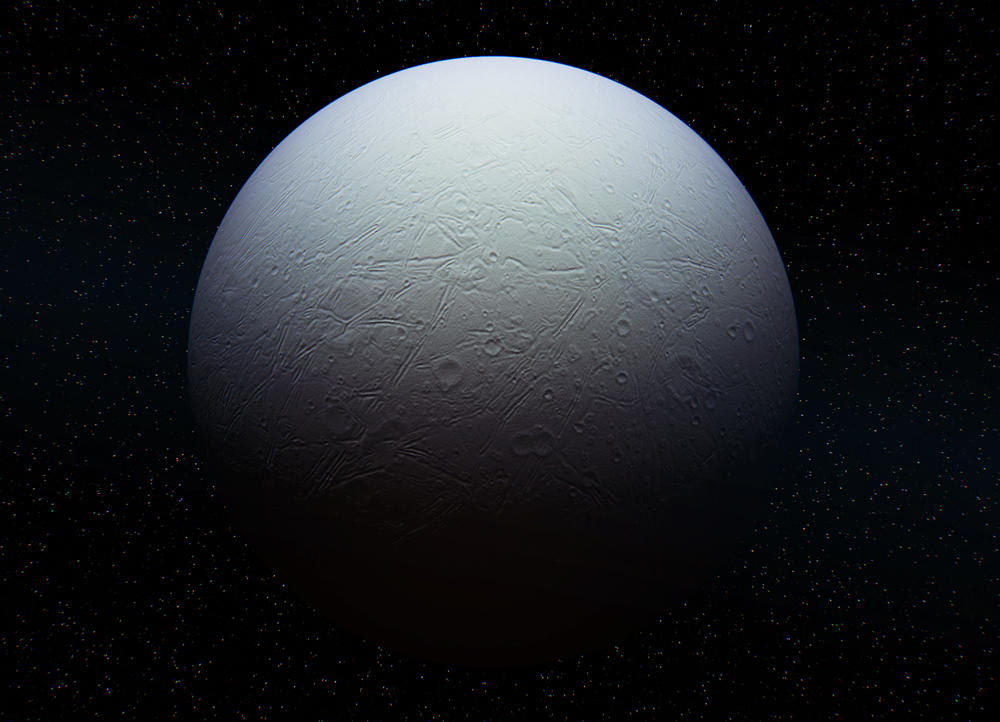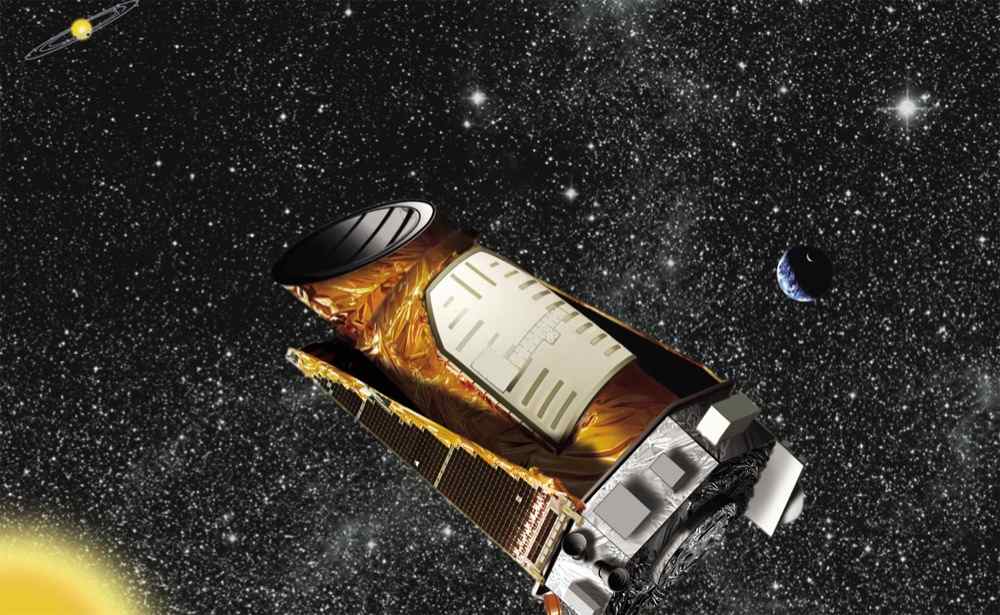Life on other planets could be far more widespread
January 16, 2014

Artist’s impression of a non-specific, cold icy planet (credit: University of Aberdeen)
Earth-sized planets can support life at least ten times farther away from stars than previously thought, according to researchers at the University of Aberdeen and the University of St Andrews.
A new paper published in Planetary and Space Science claims cold rocky planets previously considered uninhabitable may actually be able to support life beneath the surface.
The team challenges the traditional “habitable zone” or “Goldilocks zone” — the area of space around a star that can support life — by taking into consideration life living deep below the ground.
The traditional habitable zone is based on the premise that a planet needs to be not too close to its sun but also not too far away for liquid water to persist, rather than boiling or freezing, on the surface, said PhD student Sean McMahon.
“But that theory fails to take into account life that can exist beneath a planet’s surface. As you get deeper below a planet’s surface, the temperature increases, and once you get down to a temperature where liquid water can exist — life can exist there too.”
The team created a computer model that estimates the temperature below the surface of a planet of a given size, at a given distance from its star.
“The deepest known life on Earth is 5.3 km below the surface, but there may well be life even 10 km deep in places on Earth that haven’t yet been drilled. Using our computer model we discovered that the habitable zone for an Earth-like planet orbiting a sun-like star is about three times bigger if we include the top five kilometers below the planet surface.
“The model shows that liquid water, and as such life, could survive 5km below the Earth’s surface even if the Earth was three times further away from the sun than it is just now.
“If we go deeper, and consider the top 10 km below the Earth’s surface, then the habitable zone for an Earth-like planet is 14 times wider.”
The current habitable zone for our solar system extends out as far as Mars, but this re-drawn habitable zone would see the zone extend out further than Jupiter and Saturn. The findings also suggest that many of the so-called “rogue” planets drifting around in complete darkness could actually be habitable.
“Rocky planets a few times larger than the Earth could support liquid water at about 5 km below the surface even in interstellar space, and even if they have no atmosphere, because the larger the planet, the more heat they generate internally.
“It has been suggested that the planet Gliese 581 d, which is 20 light years away from Earth in the constellation Libra, may be too cold for liquid water at the surface. However, our model suggests that it is very likely to be able to support liquid water less than 2 km below the surface, assuming it is Earth-like.”
“The surfaces of rocky planets and moons that we know of are nothing like Earth. They’re typically cold and barren with no atmosphere or a very thin or even corrosive atmosphere. Going below the surface protects you from a whole host of unpleasant conditions on the surface. So the subsurface habitable zone may turn out to be very important. Earth might even be unusual in having life on the surface.”
Support from observations
So much for the model. What about actual observations?
NASA’s Kepler team recently reported in Astrophysical Journal on four years of ground-based follow-up observations of the masses, sizes, and orbits of 49 planets orbiting 22 Kepler stars. The study confirmed that the numerous Kepler discoveries are indeed planets and yield mass measurements of these enigmatic worlds that vary between Earth and Neptune in size.
“Kepler’s primary objective is to determine the prevalence of planets of varying sizes and orbits. Of particular interest to the search for life is the prevalence of Earth-sized planets in the habitable zone,” said Natalie Batalha, Kepler mission scientist at NASA’s Ames Research Center in Moffett Field, Calif.
“But the question in the back of our minds is: are all planets the size of Earth rocky? Might some be scaled-down versions of icy Neptunes or steamy water worlds? What fraction are recognizable as kin of our rocky, terrestrial globe?”
Dynamical mass measurements made by Kepler provided a hint: a large fraction of planets smaller than 1.5 times the radius of Earth may be comprised of the silicates, iron, nickel and magnesium that are found in the terrestrial planets here in the solar system, they found.
Armed with this type of information, scientists will be able to turn the fraction of stars harboring Earth-sizes planets into the fraction of stars harboring bona-fide rocky planets. And that’s a step closer to finding a habitable environment beyond the solar system — perhaps underground.
Science-fiction fans: check out the “Shaver mystery.” — Editor
Abstract of Planetary and Space Science paper
The habitable zone (HZ) is conventionally the thin shell of space around a star within which liquid water is thermally stable on the surface of an Earth-like planet (Kasting et al., 1993). However, life on Earth is not restricted to the surface and includes a “deep biosphere” reaching several km in depth. Similarly, subsurface liquid water maintained by internal planetary heat could potentially support life well outside conventional HZs. We introduce a new term,subsurface-habitability zone (SSHZ) to denote the range of distances from a star within which rocky planets are habitable at any depth below their surfaces up to a stipulated maximum, and show how SSHZs can be estimated from a model relating temperature, depth and orbital distance. We present results for Earth-like, Mars-like and selected extrasolar terrestrial planets, and conclude that SSHZs are several times wider and include many more planets than conventional surface-based habitable zones.
